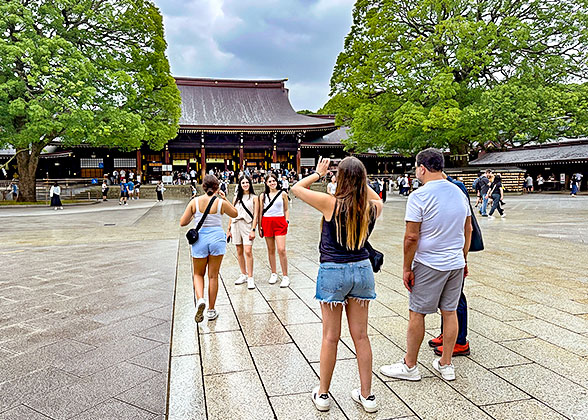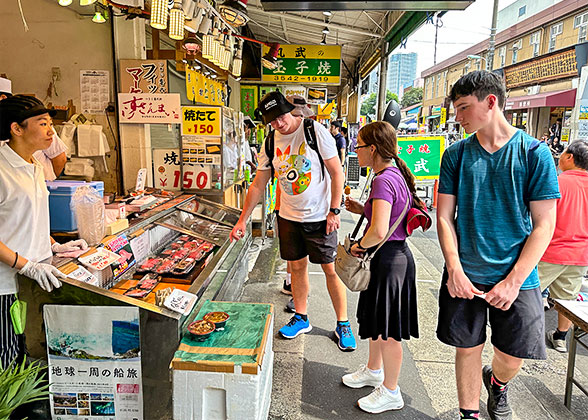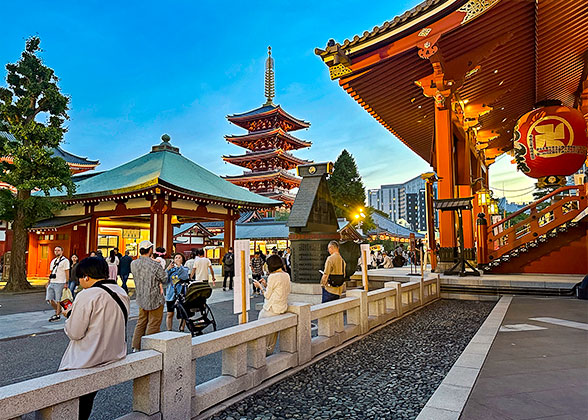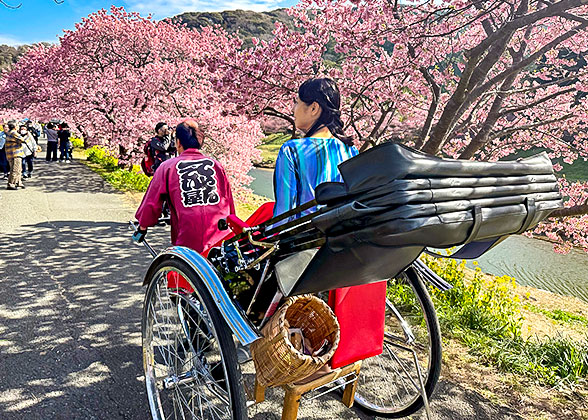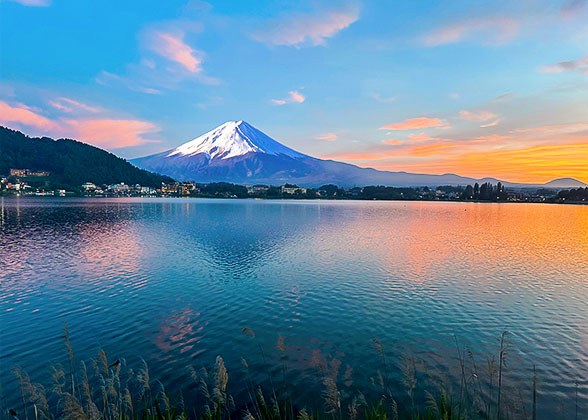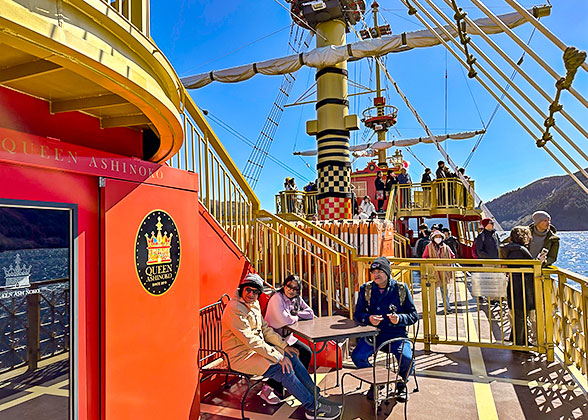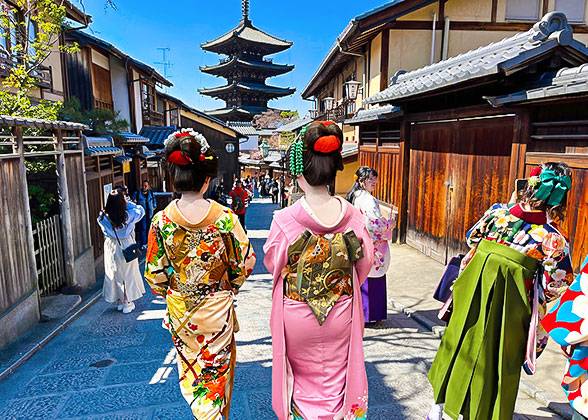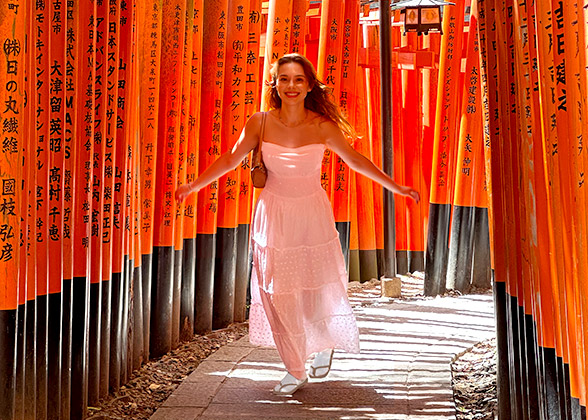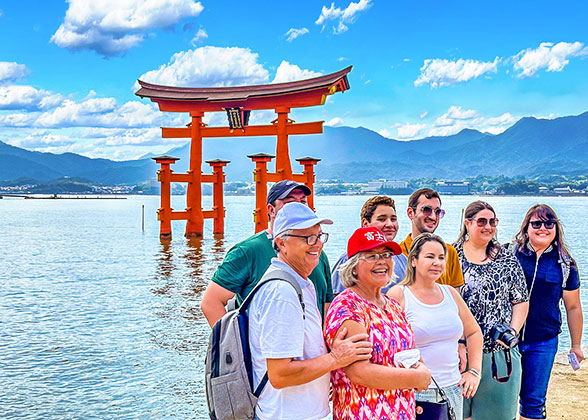Today’s city tour, using Japan’s extensive public transportation system, shows why Tokyo is highly ranked on many travel lists. After being picked up by your guide at the hotel, we
’ll move to the Tsukiji Outer Market, once the world’s largest fish market, which handled over 2,000 tons of seafood daily at its peak. Initially selling knives and kitchenware, the market has now become a sought-after hub for Tokyo’s food scene. You can savor the rich, oily flavor of freshly sliced tuna sashimi for JPY 500 (USD 3), indulge in the fluffy tamagoyaki with a hint of sweetness and an eggy aroma for just JPY 150 (USD 1), and even the seemingly simple grilled scallops are incredibly flavorful, with a buttery aroma and fresh scallop flesh, available for JPY 400 (USD 2.5), all offering great value.
Then, continue our visit to the Meiji Jingu Shrine, nestled in the heart of Tokyo amidst an artificial forest of about 100,000 trees, which forms a natural barrier that blocks out outside noise and sights. Besides paying respects to Emperor Meiji (1852 - 1912) and Empress Shoken, who played vital roles in Japan’s history, holding a wedding at Meiji Jingu Shrine is also a prestigious and meaningful goal for many Japanese couples, despite the average cost being JPY 4 million (USD 27,000). Many Japanese celebrities also choose to hold their traditional wedding ceremonies here.
Our next stop is the Imperial Palace, originally the home of the Tokugawa Shoguns and later the residence of the royal family after Emperor Meiji moved the capital from Kyoto to Tokyo in 1868. Join your guide to walk through the Imperial Palace’s Outer Gardens, getting a close-up view of the sprawling black pine forest, the impressive statue of warrior Kusunoki Masashige (1294 - 1336), and popular sights like Nijubashi Bridge. Additionally, Chidorigafuchi, the northwestern moat of the Imperial Palace, is well-known for viewing cherry blossoms from late March to early April, where crowds gather to enjoy the vibrant pink blooms along the riverbank.
In the afternoon, follow the guide to catch a glimpse of old Tokyo in Asakusa area. Starting from the Kaminarimon Gate adorned with a giant red lantern, walk through the bustling Nakamise-dori Street, where you can experience the authentic Edo-style townscape. Along the way, immerse yourself in sampling Japanese snacks, selecting souvenirs, and even watching the Tokyo Skytree afar. Finally, we’ll stop at the Senso-ji Temple and its five-story pagoda. The saying that “You’re very likely to draw an unlucky fortune at Senso-ji Temple” might discourage you from drawing fortunes. In reality, the ratio of good to bad lots here is a long-standing tradition, while many other shrines have lowered the proportion of bad lots, leading to the misconception that Senso-ji has more bad luck. Even if you draw a bad one, you can tie it to a designated wooden frame to leave the bad luck behind, so don’t worry!
After finishing today’s exciting Tokyo tour, your guide will accompany you back to the hotel.
Meals: Breakfast
Senso-ji Temple, Tokyo
Cherry Blossom in Japan

